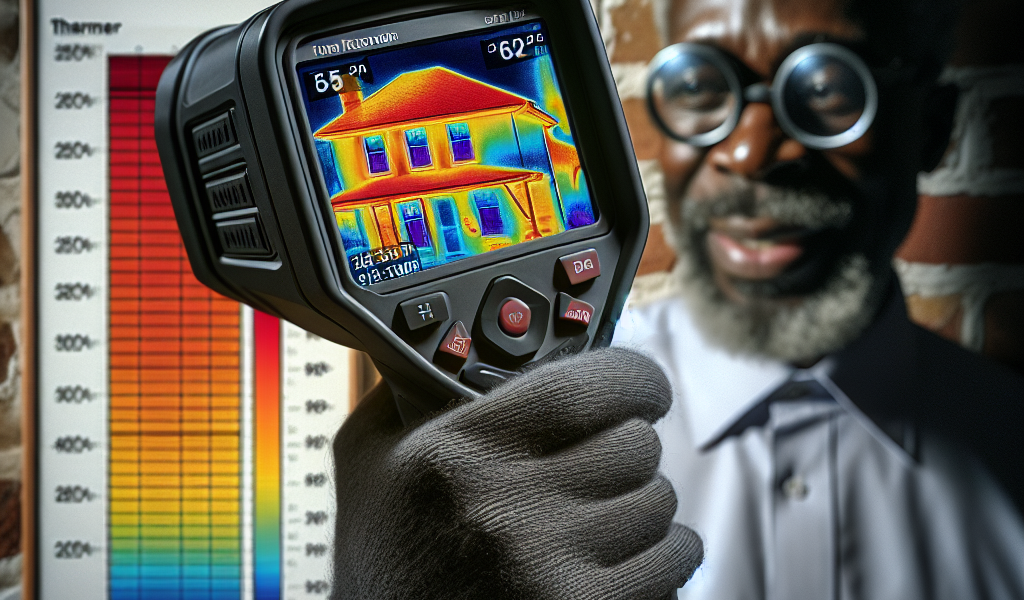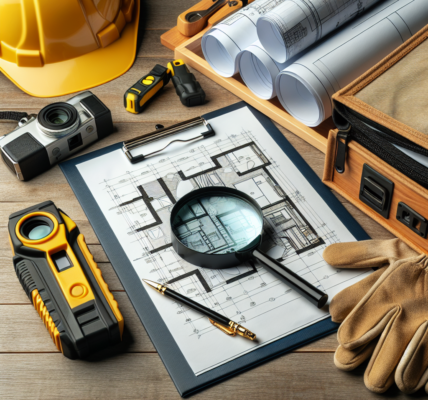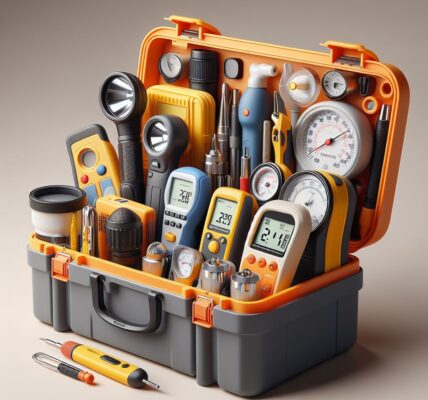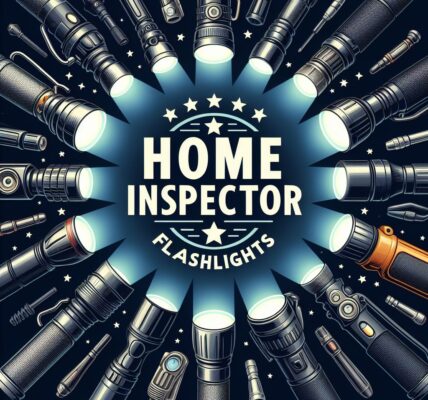Unleashing the Potential of Thermography Technology : Transforming Home Inspections
Thermography technology has emerged as a valuable tool in the field of home inspections, revolutionizing the way professionals assess and evaluate properties. With its ability to detect and capture infrared radiation, thermography enables inspectors to identify hidden issues that may otherwise go unnoticed. From insulation problems and electrical faults to moisture infiltration and structural defects, this technology has proven instrumental in revealing critical information about a property’s condition. By harnessing the power of thermography, home inspections have been transformed into more comprehensive assessments, empowering homeowners and buyers with essential knowledge about their investments.
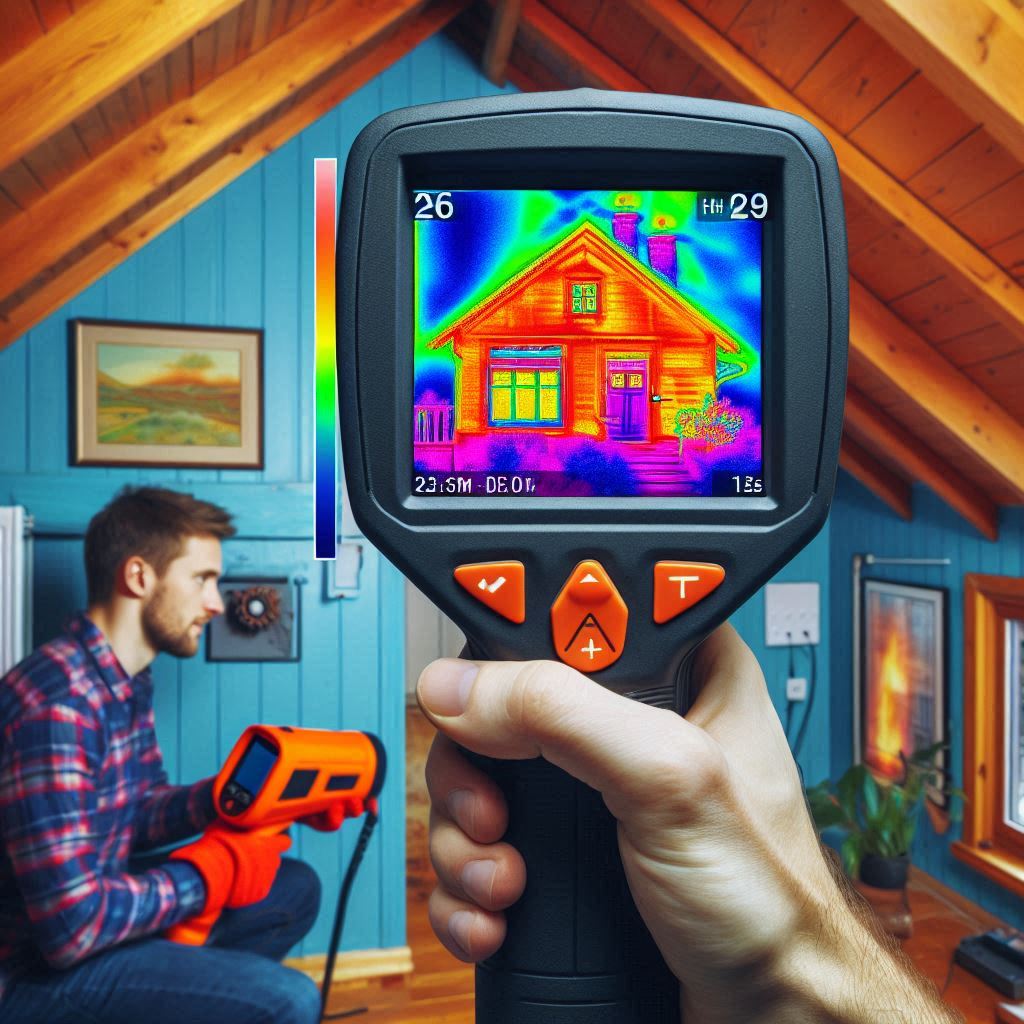
Advancements in Thermography Technology for Home Inspections
In recent years, thermography technology has emerged as a powerful tool in the field of home inspections. With its ability to detect and visualize temperature differences, this cutting-edge technology has revolutionized the way homes are assessed for potential issues. By capturing infrared radiation emitted by objects, thermographic cameras produce detailed images that can reveal hidden problems not easily detected by traditional methods.
One key advantage of using thermography technology in home inspections is its non-invasive nature. Unlike invasive techniques such as drilling holes or tearing down walls, thermal imaging allows inspectors to conduct thorough assessments without causing any damage to the property. This is particularly valuable when inspecting hard-to-reach areas such as roofs, electrical panels, and plumbing systems.
Furthermore, thermographic cameras have greatly improved their image resolution and sensitivity over time. The latest models now offer higher megapixel counts and better thermal sensitivity compared to their predecessors. These advancements enable inspectors to capture clearer images with greater accuracy, enhancing their ability to identify potential issues within a property.
By providing an accurate depiction of temperature variations across surfaces, thermography technology helps identify various defects that may exist within a home’s structure or systems. For example, it can uncover insulation gaps or deficiencies that compromise energy efficiency by highlighting areas with abnormal heat loss or gain. Similarly, it can detect water leaks and moisture intrusions through differences in surface temperatures caused by dampness.
Moreover, thermographic cameras are capable of identifying electrical faults that might pose safety hazards within a property. Loose connections or overloaded circuits generate excessive heat which can be captured on thermal images during an inspection. Detecting these anomalies early on enables homeowners to take necessary precautions before they escalate into more serious issues like electrical fires.
Another noteworthy application of thermography technology is in detecting HVAC system malfunctions. By examining temperature patterns around air conditioning units, inspectors can spot potential problems such as blocked filters or refrigerant leaks. This not only allows for timely repairs but also helps homeowners avoid costly breakdowns and higher energy bills due to inefficient systems.
Furthermore, thermographic inspections play a crucial role in detecting hidden plumbing issues. Leaky pipes or clogged drains often result in temperature variations that are easily identifiable through thermal imaging. Identifying these problems before they cause severe water damage saves homeowners from expensive repairs and the inconvenience of living without essential utilities during extensive renovations.
In conclusion, advancements in thermography technology have transformed the field of home inspections by providing non-invasive and accurate assessments of properties. Through its ability to detect temperature differences and create detailed visualizations, thermal imaging enables inspectors to uncover hidden defects within a home’s structure or systems. From insulation gaps to electrical faults and plumbing issues, thermographic cameras offer valuable insights into potential problems that may arise. With continued research and development in this field, it is likely that thermography technology will further revolutionize how homes are inspected, ensuring safer living environments for homeowners worldwide.
How Thermographic Imaging Enhances Efficiency and Accuracy in Home Inspections
Thermography technology has revolutionized the field of home inspections, enhancing both efficiency and accuracy in the process. This innovative technology utilizes infrared imaging to detect temperature differences on surfaces, making it possible to identify hidden issues that may otherwise go unnoticed. By capturing detailed images of a property’s thermal patterns, thermographic imaging provides valuable insights into various aspects of a home’s condition.
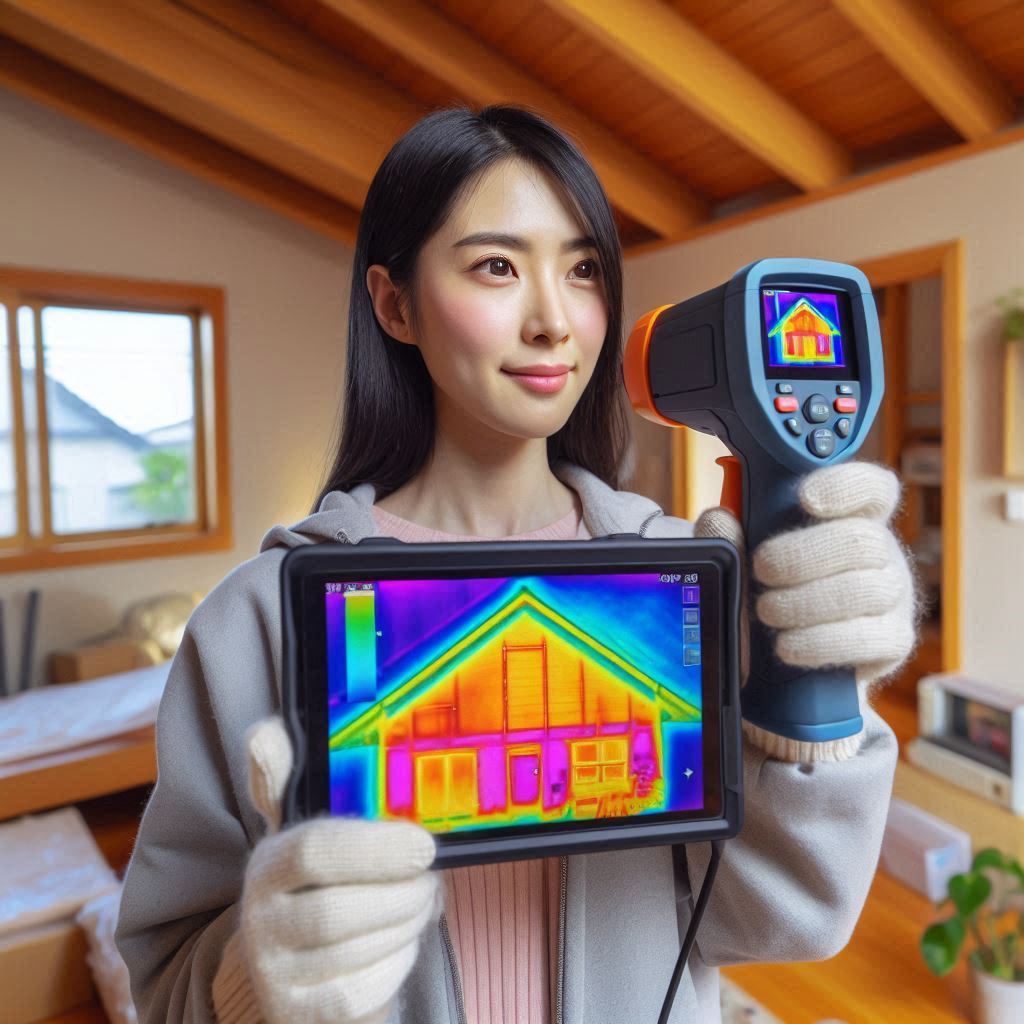
One significant advantage offered by thermography technology is its ability to identify energy inefficiencies in buildings. Heat loss through poorly insulated areas can result in increased energy consumption and higher utility bills for homeowners. Traditional inspection methods often fail to detect these types of problems accurately, as they rely mainly on visual observation rather than advanced technological tools. However, with thermographic imaging, inspectors can easily pinpoint areas where heat escapes from a building, highlighting specific regions requiring attention.
In addition to identifying energy inefficiencies, thermographic imaging also enables inspectors to uncover potential electrical hazards within a home. Faulty wiring or overloaded circuits can pose serious safety risks and lead to fires if left unaddressed. By using this cutting-edge technology during inspections, professionals can quickly scan electrical systems and identify hotspots caused by excessive resistance or loose connections that could potentially cause electrical failures.
Furthermore, thermography proves invaluable when evaluating insulation quality within homes. Inadequate insulation not only leads to uncomfortable indoor temperatures but also affects overall energy efficiency. With traditional methods alone, assessing insulation quality is challenging as issues often remain hidden beneath walls or ceilings. Thermographic imaging provides an effective solution by capturing thermal data that reveals areas with insufficient insulation allowing inspectors to recommend appropriate remedies promptly.
The benefits extend beyond just identifying existing problems; thermography technology allows for predictive maintenance by detecting early signs of potential issues before they escalate into major repairs or replacements. For instance, moisture intrusion is one such problem that requires immediate attention due to its damaging effects on building structures over time if undetected or neglected initially.
By utilizing infrared cameras during inspections, thermographic imaging can identify moisture-related anomalies such as hidden leaks or areas of excessive condensation. This enables homeowners to take preventive measures and avoid significant damage that may result from prolonged exposure to moisture.
Moreover, the use of thermography technology in home inspections can save considerable time and effort for both inspectors and homeowners. With traditional methods, inspectors would often have to rely on physical access points, such as removing drywall or ceiling tiles, to uncover potential issues. However, with thermal imaging cameras, they can assess a property’s condition without invasive procedures.
The comprehensive nature of thermographic imaging provides an accurate assessment of a home’s overall health by capturing details that might be overlooked during visual inspections alone. The data obtained through this innovative technology allows for more informed decision-making regarding repairs or upgrades required to maintain a property’s value.
In conclusion, the utilization of thermography technology has transformed home inspections by enhancing efficiency and accuracy throughout the process. From identifying energy inefficiencies and electrical hazards to evaluating insulation quality and predicting maintenance needs, this cutting-edge tool offers numerous benefits for both inspectors and homeowners alike. By embracing thermographic imaging as part of their inspection routine, professionals can unlock the full potential of this remarkable technology in transforming how we assess homes today.
Unleashing the Power of Infrared Cameras: A Game-changer for Home Inspection Professionals
The field of home inspections has seen significant advancements over the years, with professionals constantly seeking new and innovative ways to evaluate properties. One technology that has emerged as a game-changer in this industry is thermography, particularly the use of infrared cameras. These powerful devices have revolutionized the way home inspectors assess buildings, enabling them to detect hidden problems and identify potential issues that would otherwise go unnoticed.
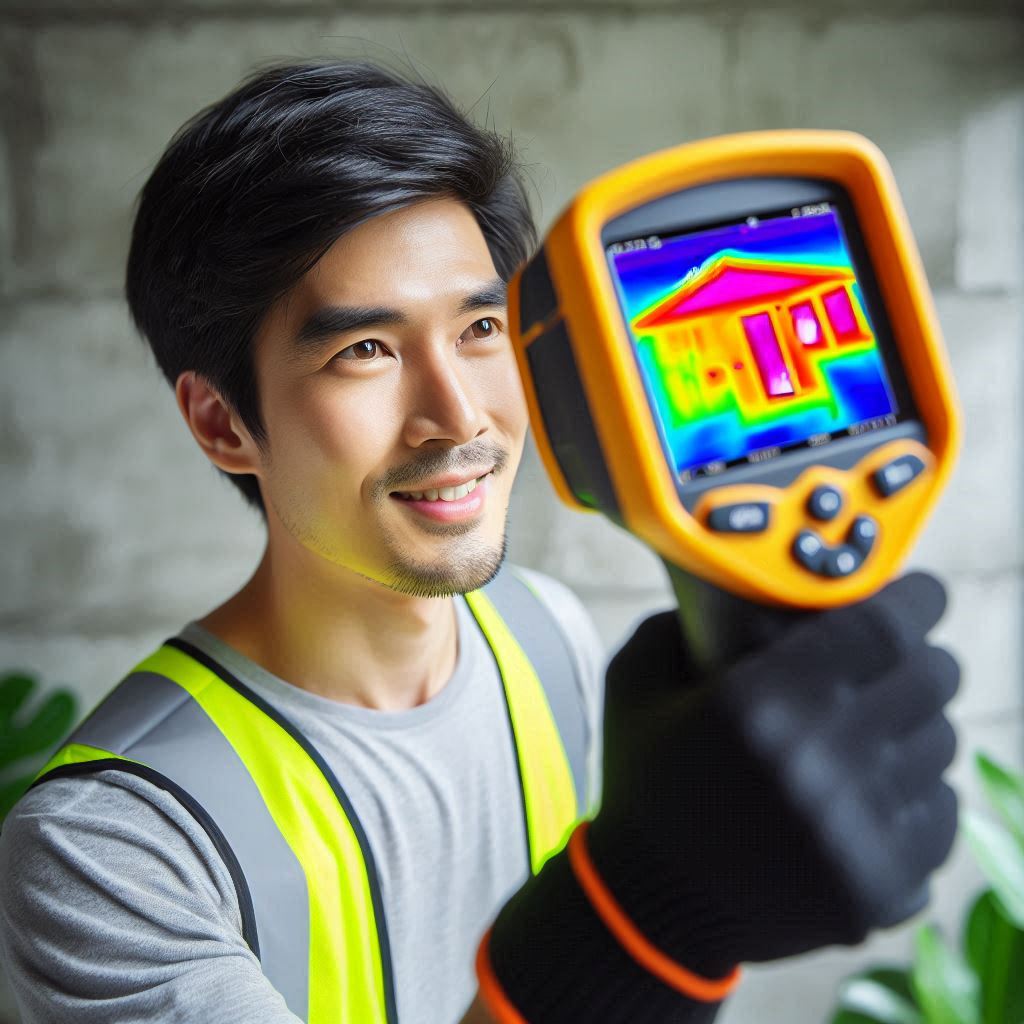
Thermography, also known as thermal imaging, is a non-invasive technique that allows inspectors to visualize temperature differences on surfaces. This technology works by capturing and analyzing the heat signatures emitted by objects or structures. By using infrared cameras during home inspections, professionals can quickly identify areas of concern such as energy loss, water leaks, electrical faults, insulation deficiencies, and even pest infestations.
One major advantage of utilizing thermography in home inspections is its ability to reveal hidden defects behind walls or other inaccessible areas. Traditional inspection methods often rely on visual cues or physical probing which may not be sufficient to uncover underlying problems. In contrast, infrared cameras can easily detect variations in temperature caused by moisture intrusion or faulty electrical systems without causing any damage to property.
Furthermore, thermographic inspections provide accurate and objective data for homeowners and prospective buyers alike. The images generated by infrared cameras are reliable evidence that can support negotiations regarding repair costs or even impact property value assessments. This level of transparency helps build trust between all parties involved while ensuring a fair evaluation process.
Another key benefit offered by thermography technology is its ability to enhance safety during home inspections. Identifying faulty electrical wiring or overloaded circuits through thermal imaging allows inspectors to flag potential fire hazards before they become life-threatening situations. Additionally, detecting moisture buildup within walls helps prevent mold growth which can negatively impact indoor air quality and pose health risks for occupants.
While there are numerous advantages associated with using thermographic inspections for residential properties, it is important to note that these devices require specialized training and expertise. Interpreting thermal images accurately requires an understanding of building science, heat transfer principles, and the limitations of infrared cameras. Home inspection professionals must undergo rigorous training to develop proficiency in using this technology effectively.
In conclusion, the advent of thermography has revolutionized home inspections by providing a comprehensive and efficient method for assessing properties. The use of infrared cameras allows inspectors to identify hidden defects, detect potential hazards, and gather objective data to support negotiations or property evaluations. Furthermore, this technology enhances safety during inspections by identifying electrical faults or moisture issues before they escalate into more significant problems. However, it is crucial for inspectors utilizing thermography to have the necessary training and knowledge to interpret thermal images accurately. By unleashing the full potential of thermography technology in home inspections, professionals can ensure a higher standard of assessment while improving overall customer satisfaction within the real estate industry.
Exploring the Limitless Possibilities of Thermography in Identifying Hidden Defects during Home Inspections
In recent years, thermography has emerged as a powerful tool for home inspections. With its ability to identify hidden defects and provide detailed imaging, it has transformed the way professionals assess and evaluate residential properties. This article delves into the limitless possibilities that thermography offers in uncovering concealed issues during home inspections.
One of the main advantages of using thermography in home inspections is its non-invasive nature. Unlike traditional inspection methods that may require drilling or dismantling structures, thermal imaging cameras can detect defects without any physical intervention. This not only reduces potential damage but also minimizes disruption for homeowners.
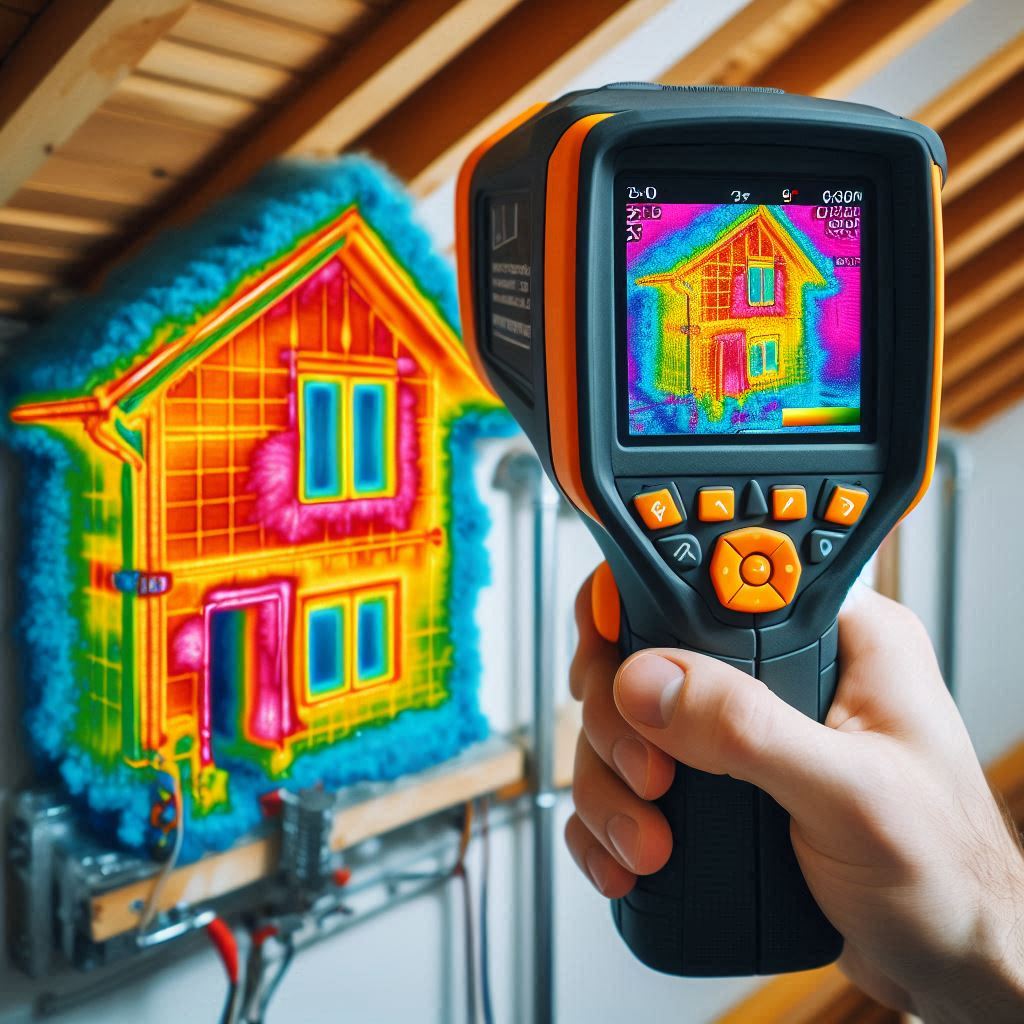
Thermographic technology works by capturing infrared radiation emitted by objects. As different materials have distinct heat signatures, thermal imaging cameras can distinguish between anomalies such as insulation gaps, moisture infiltration, electrical faults, and even termite infestations. These hidden defects are often difficult to detect visually or through conventional inspection techniques.
Insulation problems are a common issue in homes that often go unnoticed until they result in significant energy loss and increased utility bills. By utilizing thermographic scans, inspectors can quickly identify areas with insufficient insulation or air leaks based on temperature variations displayed on the camera’s screen. This enables homeowners to take timely action and improve their energy efficiency.
Moisture infiltration is another critical aspect that thermography effectively addresses during inspections. Water damage caused by leaks from pipes or roofs is often concealed behind walls or ceilings until it becomes visibly evident or causes extensive structural deterioration. However, with a thermal camera, inspectors can easily locate areas with abnormal heat patterns indicating water intrusion before major issues arise.
Electrical faults pose serious safety risks within residential properties if left undetected and unaddressed promptly. Overloaded circuits, loose connections, faulty wiring – all these potential hazards can be identified through thermographic inspections. By detecting hotspots or anomalies in electrical systems, inspectors can alert homeowners to areas that require immediate attention, preventing potential fire incidents.
Moreover, thermography has proven invaluable in identifying termite infestations within homes. Termites are known for causing significant damage to wooden structures, often hidden from plain sight until it’s too late. However, thermal imaging cameras excel at revealing the heat signatures of these pests as they create nests and travel inside walls or other inaccessible areas.
Thermography not only detects defects but also provides detailed imaging for documentation purposes. Unlike traditional inspection reports relying solely on written descriptions or photographs, thermal images offer clear visual evidence of the issues found during an inspection. This allows homeowners and professionals to better understand the severity and location of each defect.
Furthermore, with advancements in technology, the integration of artificial intelligence (AI) with thermographic inspections is becoming a reality. AI algorithms can analyze thermal images more efficiently and accurately than humans alone, reducing the chances of missing critical defects or misinterpreting data. This combination ensures even greater accuracy and reliability in home inspections.
In conclusion, thermography has revolutionized home inspections by providing a non-invasive method to identify hidden defects effectively. From insulation problems to moisture infiltration, electrical faults to termite infestations – thermal imaging cameras have expanded our ability to detect these concealed issues promptly and take necessary corrective measures before they escalate into major problems. With its documentation capabilities and future prospects of AI integration, thermography continues to unlock limitless possibilities for transforming residential property assessments into a more precise and efficient process.
The Role of Thermographic Surveys in Preventive Maintenance for Residential Properties
In recent years, thermography technology has gained significant attention in various industries, including home inspections. This non-destructive testing technique utilizes infrared imaging to detect and measure thermal patterns and temperature differences on surfaces. By capturing these images, thermographic surveys have emerged as a valuable tool for preventive maintenance in residential properties.
The role of thermographic surveys in preventive maintenance cannot be overstated. Traditional methods of detecting hidden issues within homes often involve invasive procedures or guesswork. However, with the advent of thermography technology, inspectors can now identify potential problems without causing damage to structures.
One major advantage offered by thermographic surveys is their ability to uncover insulation deficiencies. Poor insulation can result in increased energy consumption and discomfort for homeowners. Through thermal imaging, inspectors can pinpoint areas where heat is escaping from a property or cold air infiltrating it. These findings enable homeowners to address insulation problems promptly, resulting in energy savings and improved comfort.
Furthermore, electrical issues are another common problem that can be identified through thermographic surveys. Overloaded circuits or faulty wiring pose serious safety hazards within residential properties. By using infrared imaging cameras during inspections, potential hotspots indicating electrical faults can be quickly located before they become more severe issues such as fires or equipment failures.
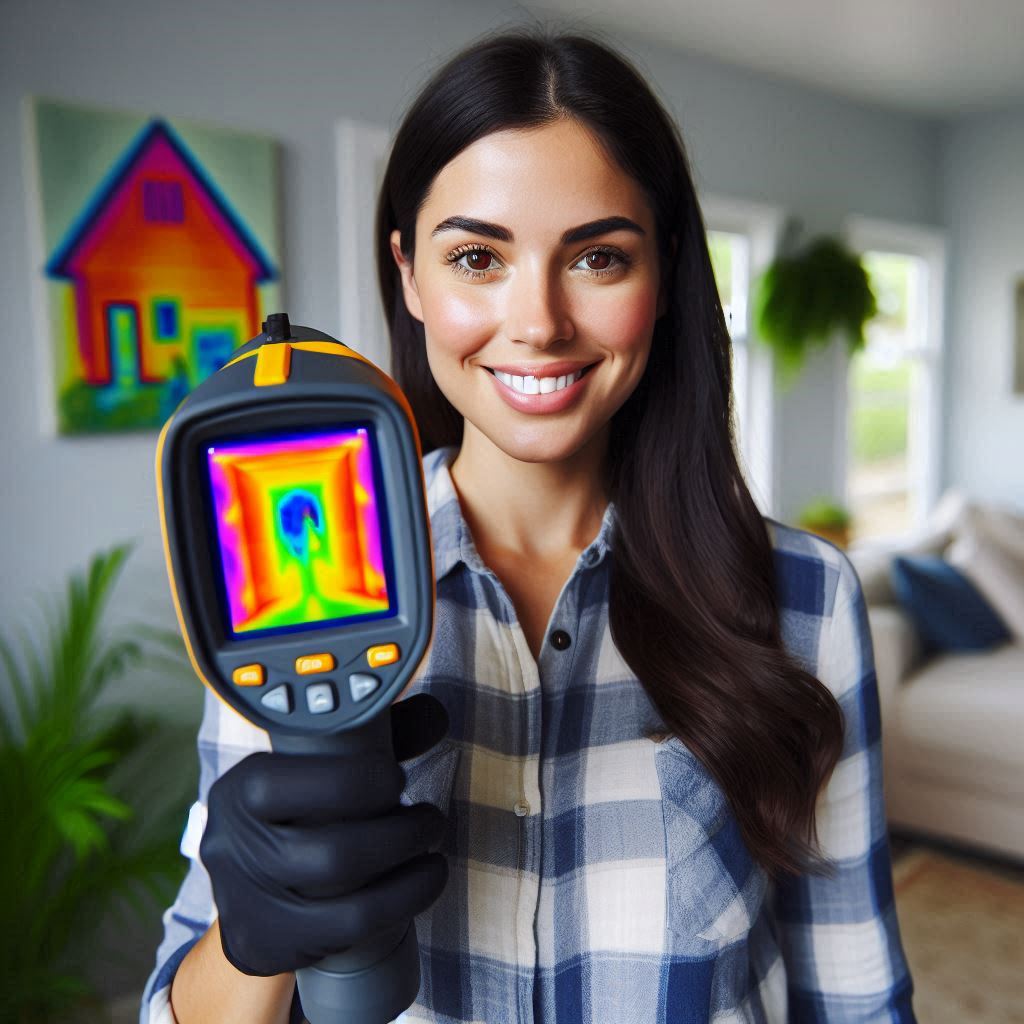
Thermographic surveys also play a vital role in identifying water leakage within buildings – a problem that is both expensive to repair and damaging to property value over time if left unaddressed. Water leaks not only compromise the structural integrity of buildings but also lead to mold growth that poses health risks for occupants. With thermal imaging cameras, inspectors are able to identify moisture intrusion by detecting temperature anomalies associated with wet areas on walls or ceilings.
Roof inspections are yet another area where thermography proves invaluable in preventive maintenance efforts for residential properties. Regular roof inspections are essential for identifying small damages that may worsen over time due to exposure to the elements. By using thermographic surveys, inspectors can detect moisture trapped beneath roof membranes, areas of inadequate insulation, or weakened sections that could lead to leaks or structural damage.
While thermography technology provides numerous benefits for preventive maintenance in residential properties, it is important to note its limitations as well. Interpretation of thermal images requires expertise and experience to distinguish between normal temperature variations and potential issues. Therefore, it is crucial to hire certified thermographers who possess the necessary training and knowledge to accurately assess thermal patterns in buildings.
In conclusion, the emergence of thermography technology has revolutionized home inspections by providing a non-destructive method for identifying potential issues within residential properties. Through thermographic surveys, homeowners can address insulation deficiencies, electrical problems, water leakage, and roof damages before they escalate into more significant issues. However, it is essential to rely on certified professionals with expertise in interpreting thermal images for accurate assessments. With its immense potential in preventive maintenance efforts for residential properties unveiled through continuous advancements in technology and research, there is no doubt that thermography will continue transforming the way homes are inspected now and into the future.
Harnessing the Potential of Thermal Imaging to Optimize Energy Efficiency in Homes
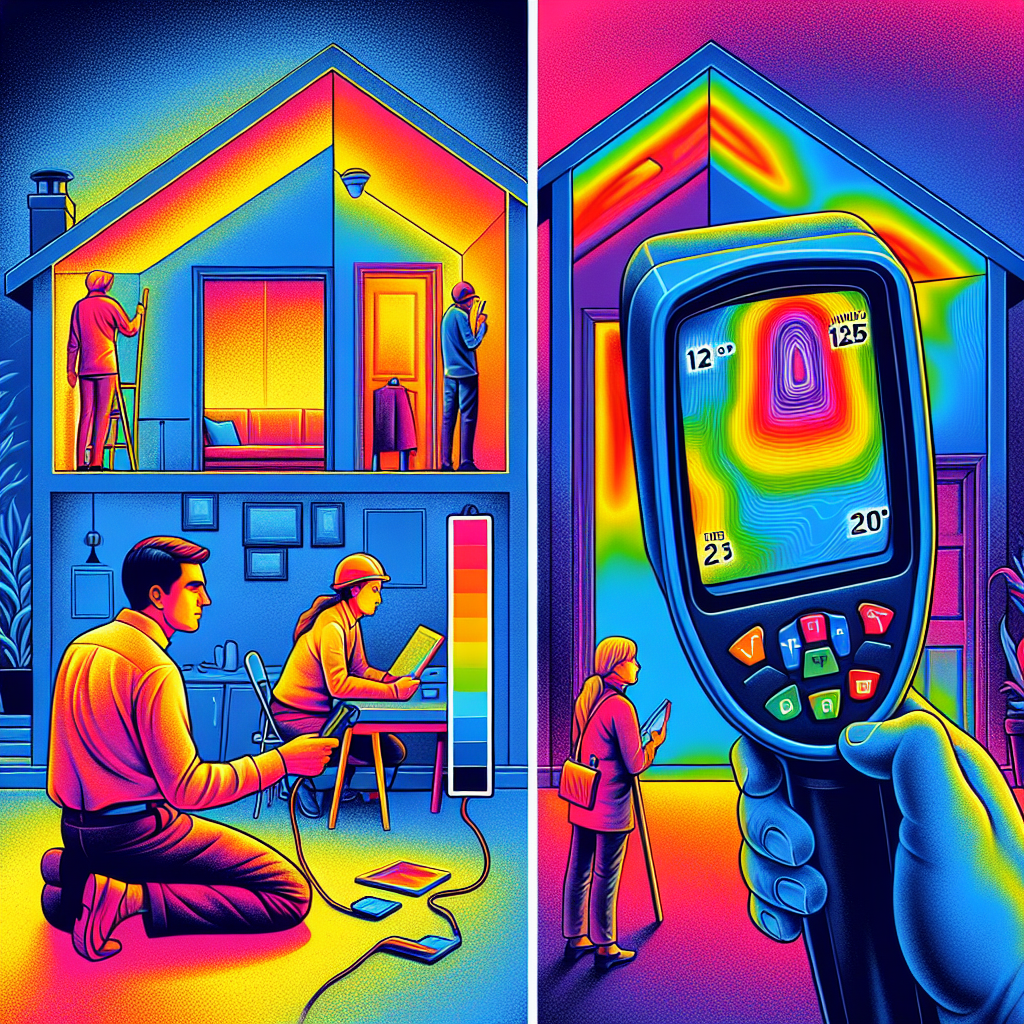
Thermography technology has emerged as a valuable tool in the field of home inspections, offering unprecedented insights into the energy efficiency of residential properties. By harnessing the power of thermal imaging, homeowners and inspectors alike can identify areas of heat loss, air leakage, and insulation deficiencies with remarkable precision. This article aims to explore how thermography technology is transforming home inspections by optimizing energy efficiency in homes.
One key advantage of using thermography for home inspections is its ability to detect thermal anomalies that are invisible to the naked eye. Traditional inspection methods often fail to uncover hidden issues such as poor insulation or air leaks within walls and ceilings. However, with thermal imaging cameras, inspectors can easily pinpoint these problem areas by detecting temperature variations across surfaces.
By analyzing infrared images captured during a thermographic survey, experts can identify specific regions where heat loss occurs most frequently. This allows homeowners to address these issues promptly and make necessary improvements to their property’s energy efficiency. For example, if an image reveals significant heat loss around windows or doors, homeowners can consider upgrading them or adding weatherstripping to improve insulation.
Furthermore, thermography provides valuable insights into potential electrical problems within a property. Faulty wiring or overloaded circuits generate excess heat that can be detected through thermal imaging. Identifying these electrical hotspots not only ensures safety but also helps optimize energy usage by rectifying inefficiencies caused by overheating appliances.
In addition to identifying sources of energy wastage within a home, thermography technology aids in evaluating overall insulation quality. With accurate thermal images at hand, inspectors can assess whether current insulating materials are sufficient or require reinforcement in certain areas prone to excessive heat transfer.
Moreover, utilizing this innovative technology contributes significantly towards making homes more eco-friendly and sustainable. By reducing unnecessary energy consumption resulting from poorly insulated structures or air leakage points, homeowners lessen their carbon footprint while saving on utility bills simultaneously.
The benefits of employing thermographic surveys extend beyond individual households; they can play a vital role in broader energy efficiency initiatives. Government agencies, housing associations, and property developers can utilize this technology to identify areas of improvement across entire neighborhoods or communities. By conducting large-scale thermal imaging surveys, it becomes possible to prioritize the implementation of energy-saving measures where they are most needed.
Despite its numerous advantages, there are certain limitations to consider when utilizing thermography for home inspections. Factors such as ambient temperature and weather conditions may affect the accuracy of thermal images obtained during surveys. Additionally, interpreting these images requires expertise and experience to distinguish between true anomalies and natural variations caused by environmental factors.
In conclusion, thermography technology has emerged as an invaluable tool in optimizing energy efficiency in homes through detailed home inspections. By identifying hidden issues related to insulation quality and air leakage points using thermal imaging cameras, homeowners can take proactive steps towards reducing their carbon footprint while simultaneously improving comfort levels within their properties. Moreover, on a larger scale, employing thermographic surveys facilitates targeted energy-saving initiatives at community levels by pinpointing areas with the greatest potential for improvement. As this technology continues to advance and become more accessible, its potential impact on sustainable living is boundless.
Transforming Home Inspections with Cutting-edge Thermal Imaging Solutions
In recent years, home inspections have become an essential part of the real estate market. Buyers and sellers alike rely on these inspections to ensure that properties are in good condition and free from any hidden issues. Traditionally, inspectors would rely on their experience and knowledge to identify potential problems. However, with advancements in technology, a new tool has emerged that is revolutionizing the field of home inspections – thermography.
Thermography technology utilizes thermal imaging cameras to detect variations in temperature. This enables inspectors to identify areas of heat loss, moisture intrusion, electrical faults, and other issues that may not be visible to the naked eye. By capturing infrared images, thermal imaging cameras provide valuable insights into the overall condition of a property.
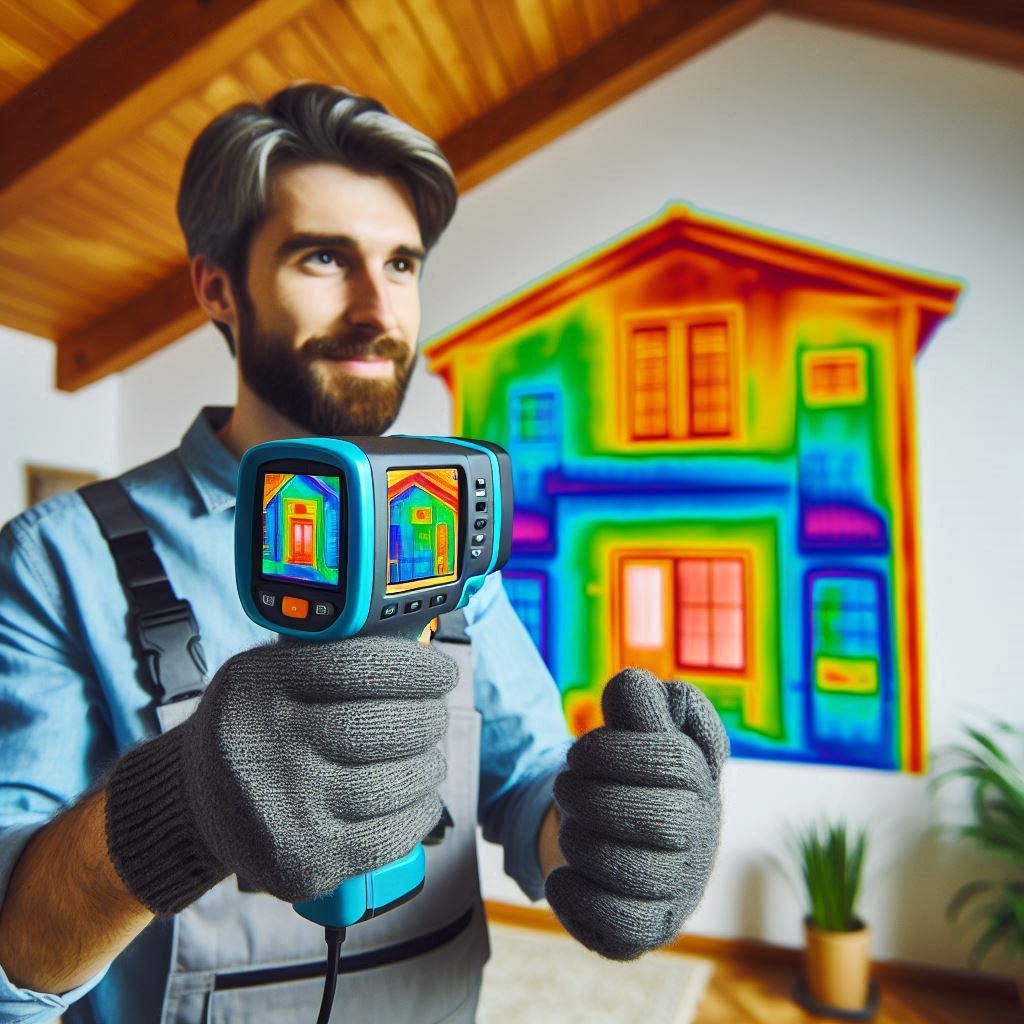
One major advantage of using thermography for home inspections is its ability to detect hidden defects behind walls or ceilings. Infrared cameras can reveal areas where insulation is lacking or has been improperly installed. These deficiencies can lead to energy inefficiency as well as potentially costly repairs down the line. By identifying these issues early on, homeowners can take proactive measures to address them before they escalate into bigger problems.
Moisture intrusion is another common issue that can be easily detected through thermal imaging technology. Water damage often goes unnoticed until it becomes visible on surfaces or leads to mold growth. With a thermal camera, however, inspectors can quickly pinpoint areas where moisture is present even before it becomes visually apparent.
Electrical faults are yet another area where thermography proves invaluable for home inspections. Faulty wiring or overloaded circuits pose significant safety risks and are often difficult to spot without specialized equipment like infrared cameras. By analyzing heat signatures within electrical systems, inspectors can identify hotspots indicative of faulty connections or other potential hazards.
Furthermore, by conducting a thorough thermographic inspection of a property’s HVAC system during a home inspection process ensures optimal performance while reducing energy consumption costs. This technology can identify any issues that may be impeding the system’s efficiency, such as duct leaks or improperly functioning components. By addressing these concerns promptly, homeowners can improve energy efficiency and potentially save on utility bills.
While thermography technology has tremendous potential in transforming home inspections, it is important to note that proper training and expertise are essential for its effective utilization. Interpreting thermal images requires a comprehensive understanding of building science and the ability to differentiate between normal temperature variations and actual defects.
To unleash the full potential of thermography in home inspections, inspectors must invest in professional training to ensure accurate interpretations of infrared images. In addition, they should stay up-to-date with advancements in thermal imaging technology to take advantage of new features and capabilities that could further enhance their inspection processes.
In conclusion, thermography technology is revolutionizing the field of home inspections by providing valuable insights into hidden defects such as heat loss, moisture intrusion, electrical faults, and more. With its ability to detect problems that may go unnoticed during visual inspections alone, this cutting-edge solution empowers homeowners to address issues before they escalate into costly repairs or safety hazards. However, it is crucial for inspectors to receive proper training and stay abreast of technological advancements in order to fully harness the potential benefits offered by thermography technology.
Utilizing Thermography Technology to Detect Moisture Intrusion and Mold Growth in Buildings
Thermography technology has emerged as a powerful tool in the field of home inspections, revolutionizing the way we detect and address moisture intrusion and mold growth in buildings. With its ability to capture infrared images, thermography provides us with a non-invasive means to visualize heat patterns, enabling us to identify potential problem areas that are otherwise invisible to the naked eye.
One of the primary benefits of utilizing thermography technology for detecting moisture intrusion is its ability to pinpoint areas where water may be penetrating the building envelope. By identifying these vulnerable points early on, homeowners and inspectors can take preventive measures to mitigate further damage. Traditional inspection methods often involve destructive testing or invasive techniques that can be time-consuming and costly. However, by leveraging thermography technology, inspectors can assess moisture levels within walls without causing any disruption or damage.
In addition to identifying problem areas related to water intrusion, thermography technology also enables us to detect mold growth within buildings. Mold thrives in damp environments and can pose serious health risks if left unchecked. The use of thermographic imaging allows inspectors to locate hidden sources of moisture that contribute to mold growth before it becomes visible or causes structural damage.
When using thermal cameras for assessing moisture issues and mold growth, several factors need consideration for accurate results. Ambient temperature fluctuations should be taken into account since variations could affect thermal readings. Additionally, surfaces must be dry during scanning as wet materials tend not only alter their emissivity but also conduct heat differently than dry ones.
To effectively utilize thermographic technology for detecting moisture intrusion and mold growth, training is crucial. Certified professionals possess expertise in understanding thermal patterns associated with various building components such as roofs, walls, floors, windows, doors etc., enabling them not only interpret infrared images accurately but also suggest appropriate remediation strategies.
However effective it may be when used appropriately by trained experts; there are limitations inherent in using this technique alone for diagnosing moisture issues comprehensively: It does not reveal the source of moisture, such as a leaking pipe or faulty plumbing. Therefore, it is advisable to combine thermography technology with other inspection methods to achieve a more comprehensive understanding of moisture-related problems.
In conclusion, thermography technology has transformed home inspections by offering an efficient and non-invasive means of detecting moisture intrusion and mold growth in buildings. By capturing infrared images, this technology allows inspectors to visualize heat patterns that would otherwise be invisible to the naked eye. With its ability to identify potential problem areas early on, homeowners can take preventive measures to mitigate further damage and health risks associated with mold growth. However, it is important for professionals utilizing thermographic imaging for assessing moisture issues and mold growth to undergo proper training in order to accurately interpret thermal patterns associated with different building components. While thermography alone may not reveal the source of moisture, combining this technology with other inspection methods can provide a more holistic understanding of any underlying issues. Ultimately, unleashing the full potential of thermography technology has revolutionized the field of home inspections and ensured safer living environments for homeowners worldwide.
Overcoming Challenges: Maximizing the Benefits of Thermal Scanning during Home Inspections
Thermal scanning, also known as thermography, has emerged as a game-changing technology in the field of home inspections. By using infrared imaging, thermography can detect temperature differences in objects and surfaces. This ability makes it an invaluable tool for uncovering hidden issues within a home that would otherwise be undetectable to the naked eye.
However, like any other technological innovation, thermography comes with its own set of challenges. In order to maximize the benefits of thermal scanning during home inspections, these challenges must be overcome.
One of the primary challenges faced when using thermography is the interpretation of results. The images captured by thermal cameras often show variations in color and temperature that can be difficult to understand without proper training. It requires expertise and experience to accurately interpret these images and identify potential problems such as insulation deficiencies or electrical hotspots.
To address this challenge, it is essential for inspectors to undergo specialized training in thermographic analysis. By acquiring knowledge about heat transfer principles and understanding how different materials behave under varying conditions, inspectors can develop a deeper understanding of the information presented by thermal scans. Additionally, ongoing education and professional development should be encouraged to ensure inspectors stay up-to-date with advancements in technology and best practices.
Another challenge associated with utilizing thermography during home inspections is equipment limitations. Thermal cameras have improved significantly over time; however, they still have their limitations when it comes to resolution and sensitivity. Subtle temperature differences may go unnoticed if the camera’s resolution is not high enough or if there are ambient factors affecting accuracy.
To mitigate this challenge, investing in high-quality thermal imaging equipment becomes crucial. Inspectors need access to tools that offer superior resolution capabilities along with adjustable settings for different environmental conditions. Moreover, regular maintenance and calibration checks should be conducted on these devices to guarantee accurate readings.
Furthermore, integrating thermographic data into existing inspection reports presents another hurdle for home inspectors utilizing this technology effectively. Integrating visual images from a thermal camera into a traditional inspection report format can be cumbersome and may not effectively convey the information to clients.
To overcome this challenge, inspectors should consider utilizing specialized software that allows for the seamless integration of thermal images. These software programs enable inspectors to overlay infrared images onto standard digital photographs, providing a comprehensive visual representation of potential issues within a home. Additionally, incorporating clear and concise explanations alongside these images in the inspection report can aid in client understanding.
In conclusion, while thermography technology has revolutionized home inspections by uncovering hidden problems, it is crucial to address the challenges associated with its use. Specialized training in interpreting thermographic data, investing in high-quality equipment, and utilizing advanced software for reporting are all essential steps towards maximizing the benefits of thermal scanning during home inspections. By overcoming these challenges and embracing this powerful tool, home inspectors can truly unleash the potential of thermography technology in transforming how homes are inspected.
Thermography as a Powerful Tool for Identifying Electrical Issues during Property Assessments
Thermography technology has emerged as a powerful tool for conducting property assessments and revolutionizing the field of home inspections. Among its numerous applications, thermography proves to be particularly effective in identifying electrical issues during property assessments. This article explores the potential of thermography technology in uncovering hidden electrical problems and highlights its advantages over traditional inspection methods.
First and foremost, it is essential to understand how thermography works. Utilizing infrared imaging cameras, thermographic inspections detect temperature variations on surfaces. By visualizing these differences, inspectors can identify anomalies that may indicate faulty or overloaded circuits, loose connections, or other electrical abnormalities. Unlike conventional inspections that rely solely on visual assessment or invasive techniques like dismantling walls, thermographic inspections provide a non-destructive way of assessing electrical systems.

One significant advantage of using thermography for identifying electrical issues is its ability to uncover hidden problems invisible to the naked eye. Faulty wiring often generates excess heat due to resistance within the circuitry. Thermographic scans can capture this abnormal heat emission even if there are no visible signs such as sparking or smoke present during an inspection. Consequently, potentially hazardous situations can be detected before they escalate into major safety concerns.
Furthermore, utilizing thermal imaging reduces human error associated with manual inspections by offering objective and precise results based on quantitative data analysis rather than subjective interpretation alone. While experienced inspectors possess invaluable knowledge about common defects and deficiencies encountered during their career; human perception varies from person to person leading inconsistencies when visually diagnosing problematic areas especially when only minor temperature fluctuations exist.
Another crucial advantage provided by thermographic technology lies in its time-saving capabilities compared to traditional inspection methods which tend to be more labor-intensive and time-consuming.Thermographic surveys can quickly scan large areas within a short span while simultaneously detecting multiple faults that would otherwise require significantly more effort if relying solely on direct observation techniques.This efficiency allows inspectors to cover a broader range of assessments in less time, ensuring property owners receive comprehensive evaluations without unnecessary delays.
Moreover, thermography proves itself invaluable for electrical inspections due to its non-contact nature. Inspectors can conduct scans from a distance while minimizing safety risks associated with physical contact or dismantling of electrical systems. This ability is particularly beneficial when evaluating live circuits where personal protection measures must be strictly adhered to. Consequently, the risk of electric shock or other accidents that could potentially occur during direct inspections is significantly reduced when utilizing thermographic technology.
Lastly, the adoption of thermographic technology aligns with sustainability goals by promoting energy efficiency and reducing waste generated during invasive inspections or diagnostic methods. Traditional inspection techniques often require destructive testing such as cutting into walls or removing floorboards to assess hidden wiring or circuitry issues. Conversely, thermal imaging allows for minimal disruption and damage, contributing to the preservation of building materials and reducing overall environmental impact.
In conclusion, the potential unleashed by thermography technology in identifying electrical issues during property assessments showcases its transformative capabilities within the field of home inspections. By uncovering hidden problems invisible to the naked eye, providing objective results based on quantitative data analysis rather than subjective interpretation alone, saving time through efficient scanning procedures, minimizing safety risks associated with direct inspections, and aligning with sustainability goals; thermography proves itself as a powerful tool revolutionizing how electrical issues are detected and addressed in modern property assessments
The Future is Now: Exploring Emerging Applications of Thermography Technology in Real Estate
Thermography technology has long been used in various industries for its ability to detect and visualize heat patterns. In recent years, this technology has found new applications in the field of real estate, revolutionizing the way home inspections are conducted. As we look into the future of thermography technology, it becomes evident that there is enormous potential for further development and expansion in this area.
One emerging application of thermography technology in real estate is energy efficiency assessments. By using thermal imaging cameras, inspectors can identify areas of heat loss or gain within a property. This information allows homeowners to make targeted improvements to their insulation or HVAC systems, resulting in significant energy savings. Furthermore, with increasing concerns about climate change and rising energy costs, many governments are incentivizing energy-efficient homes through tax credits or grants. Thermography provides an objective means of assessing a property’s energy efficiency and determining eligibility for these incentives.
Another exciting development is the use of thermography technology to detect water leaks and moisture intrusion within buildings. Water damage can be costly to repair and may lead to structural issues if left untreated. Traditional methods of identifying leaks often involve destructive testing or extensive investigations; however, thermal imaging offers a non-invasive alternative that can quickly pinpoint problem areas without causing unnecessary disruption or damage.
Additionally, as sustainability continues to gain importance worldwide, there is growing interest in green building practices. Thermographic surveys enable builders and architects to assess the effectiveness of sustainable design elements such as passive solar heating systems or natural ventilation strategies by analyzing temperature differentials across a building’s surfaces. These insights help optimize designs for maximum energy efficiency while maintaining occupant comfort levels.
Moreover, as urbanization increases around the globe, so does concern about urban heat islands – localized areas with higher temperatures compared to surrounding rural regions due to human activities like construction and increased infrastructure density. Urban planners are now incorporating thermographic mapping into their strategies when designing cities aiming at minimizing these effects by identifying hotspots that need mitigation measures like the planting of trees or changes in construction materials. This application not only improves the quality of life for city residents but also contributes to global efforts in combating climate change.
In addition to these emerging applications, there is still much untapped potential for thermography technology in real estate. As researchers continue to refine the resolution and sensitivity of thermal imaging cameras, new possibilities will arise. For instance, enhanced detection capabilities could allow inspectors to identify hidden electrical faults or insulation deficiencies that are currently challenging to detect with conventional methods.
Furthermore, advancements in artificial intelligence and machine learning algorithms may enable automated analysis of thermographic data. This development would streamline inspections further by reducing reliance on human interpretation and potentially improving accuracy.
In conclusion, the future looks promising for thermography technology as it continues to transform home inspections within the real estate industry. From energy efficiency assessments to water leak detection and green building practices, this innovative tool has already demonstrated its value. With ongoing research and technological advancements, we can expect even more exciting applications that will shape how we approach property inspections in years to come. By harnessing the power of thermography technology, we can unlock endless possibilities and create safer, more sustainable living environments for all.In conclusion, thermography technology has the potential to greatly transform home inspections. It offers numerous benefits such as non-invasive and accurate detection of hidden issues, energy efficiency assessments, and preventive maintenance. By leveraging this technology, homeowners can ensure their homes are safe and optimized for energy consumption. Additionally, professionals in the real estate industry can provide more comprehensive inspection reports to their clients, leading to better decision-making and increased customer satisfaction. Overall, the adoption of thermography technology in home inspections is a valuable advancement that holds immense potential for improving property evaluations and enhancing overall safety and efficiency in residential buildings.
